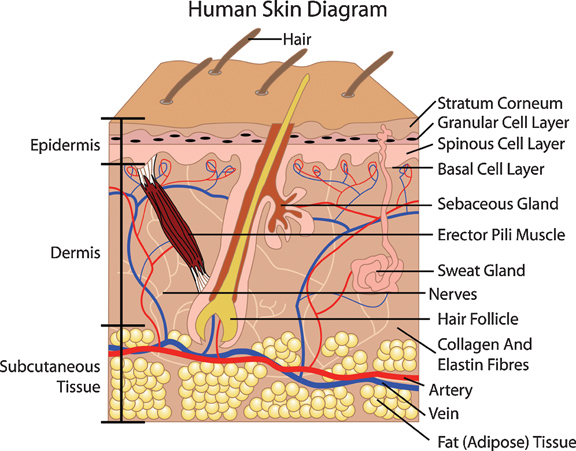

by
Roger L. McMullen and Gopinathan K. Menon
Human skin is the largest organ in the body and is responsible for many critical functions, including thermal regulation, immune response, and barrier function. Thermal regulation is carried out in two different manners. The first is a process known as vasodilation and vasoconstriction in which the control of blood flow is regulated by dilating and constricting blood vessels in the skin. This allows for regulation of internal body temperature permitting heat to be released to the environment and, also, for mitigation of inflammatory responses. In addition, temperature is regulated by sudiforous glands, which through a process known as evaporative cooling release sweat on the surface of the skin.

Figure 1. Structure of human skin. Copyright (2013) Allured Publishing,
Reprinted with permission from R. McMullen,Antioxidants and the Skin, Allured Books: Carol Stream, IL (2013).
From a slightly different perspective, the skin’s role in the immune system is paramount and involves the mobilization of an immune attack by coordinating the response of many different cell types via complex molecular signaling pathways. Finally, barrier function, which is afforded by the outermost layer of the epidermis—the stratum corneum—is crucial to prevent the entry of foreign pathogens in the viable epidermis and to prevent the loss of body water to the external environment. The skin is also the lens through which the exterior world sees us. The health state and physical condition of our skin plays a crucial role in our psychological well-being. In this section, we describe the various functions of skin and also delve into the intricacies of its structure. We begin with a fundamental description of the epidermis and a break down of its layered components. This is followed by a depiction of the molecular architecture that comprises the dermal-epidermal junction; and then we explore the dermis, which is further broken down into its two structural divisions: the reticular and papillary dermis.
RETURN TO STRUCTURE OF SKIN MENU